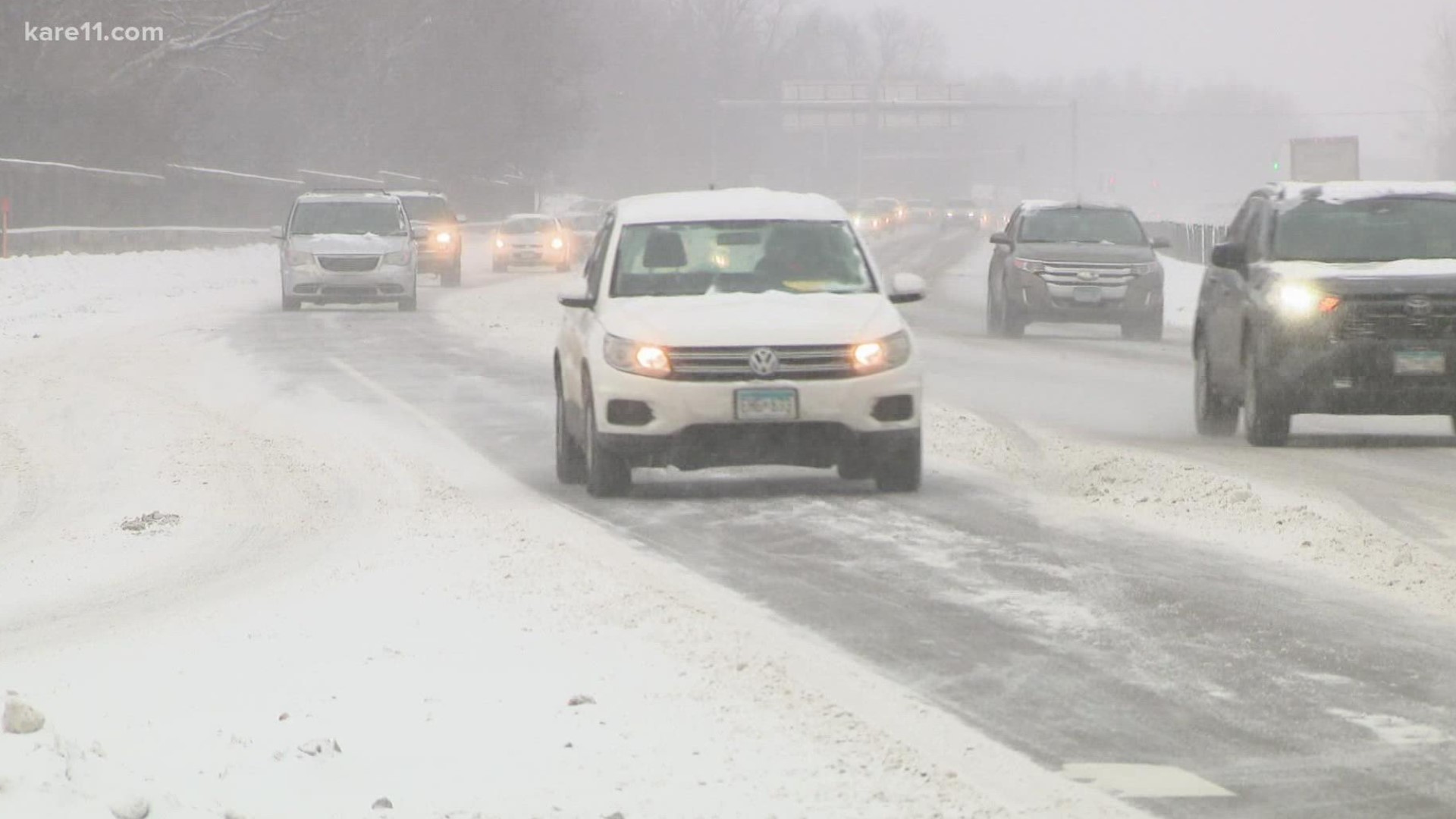MINNESOTA, USA — Too much salt is truly a bad thing.
Minnesota will see more snow fall before we can officially say goodbye to winter in a couple of weeks. That means the salt is also here to stay for now to help treat the roadways.
But just how bad is the salt pollution in Minnesota today?
The short answer is it’s getting better, but more needs to be done to protect Minnesota's water bodies.
Jed Falgren is the State Maintenance Engineer for the Minnesota Department of Transportation, or MnDOT.
"Our big piece is we want to put the right material, at the right time, in the right amount, at the right location," Falgren said.
Over the decades, MnDOT and many county and city agencies and businesses that use salt have learned about the devastating impacts of chloride to the Land of 10,000 Lakes.
Salt is made up of sodium chloride. Chloride is a permanent pollutant that’ll stick around forever in water, according to the Minnesota Pollution Control Agency, or MPCA.
Brooke Asleson is the Chloride Reduction Program Coordinator at MPCA. She said it just takes one teaspoon of salt in a five gallon bucket of water before it starts to create problems.
"Chloride is actually toxic to our freshwater fish and insects living in our lakes our wetlands our streams," Asleson said.
Asleson said there are 50 surface waters that are too high in chloride levels, with most concentrated in the Twin Cities metro. She said 75 more are close, and that's only testing 10% of the state's surface waters.
Asleson said water softening salt and fertilizer are some of the main sources of salt pollution, but the primary source is de-icing salt runoff. She said part of the answer to protect our waters is to add water to the salt. That's called "brine."
"When you use liquid salt, you're using about 30% salt, 70% water and so right there, you've reduced your salt use dramatically and it stays where you put it," Asleson said. As in, it's not bouncing off the roads into drains and into our water systems.
"Now we're working on that mindset change, to haul a lot more liquids," Falgren said. Falgren said they've done that for many years now. But also to do more of it, said they need to change their trucks, which could cost anywhere between $25,000 to $30,000 per truck. MnDOT says there are more than 800 snowplows statewide.
"We're actually using sugars or carbohydrates in many locations to help slow down that refreeze so we can get that snow and ice off the roadway and away from traffic and minimal environmental impact," he said.
Consistency of liquids matters too. MnDOT calls what they're trying to do more of a “slurry.”
"This is where instead of putting a gallon of two per ton of salt, we're trying to put down 20, 30, 40 gallons per mile of liquid and so it really changes that consistency to much like a very wet oatmeal," Falgren said. The "oatmeal” has proven to work in the right conditions.
MnDOT said it’s also exploring completely different alternatives, like potassium acetate.
"We are using a potassium acetate in our District 1 up in Duluth on roadways and we always use that same project on bridges here in the metro," Falgren said. MnDOT is currently in phase 2 of that project, which is taking a closer look at environmental impacts. During phase 1, four snowplows in District 1 used potassium acetate to test its effectiveness during snow and ice operations. MnDOT said that testing found it was effective, especially at lower temperatures and when mixed with traditional rock salt.
MnDOT said the advantages were that potassium acetate melts at lower temperatures, doesn't absorb water, and doesn’t corrode steel or add salinity to water. But the disadvantages are that it is toxic to some organisms, especially at higher levels, it uses oxygen to break down, it can not be blended with brine, and it’s more expensive.
Asleson is following this research closely.
"The short term toxicity is much higher than chloride so we just need more research to understand is that better than chloride the same or worse," Asleson said. "The time to address this is now and to get ahead of this so we can keep our fresh waters fresh and not salty."
MPCA says salt use has been complicated over the years as we see more severe winter weather events, but overall because there is more information now, the state is doing better. MnDOT says it is a little lower in material usage this year and already approaching the same amount of liquid they used last year.
RELATED: KARE in the Air: Buck Hill
More from KARE 11 Sunrise
Watch more on our YouTube playlist:

